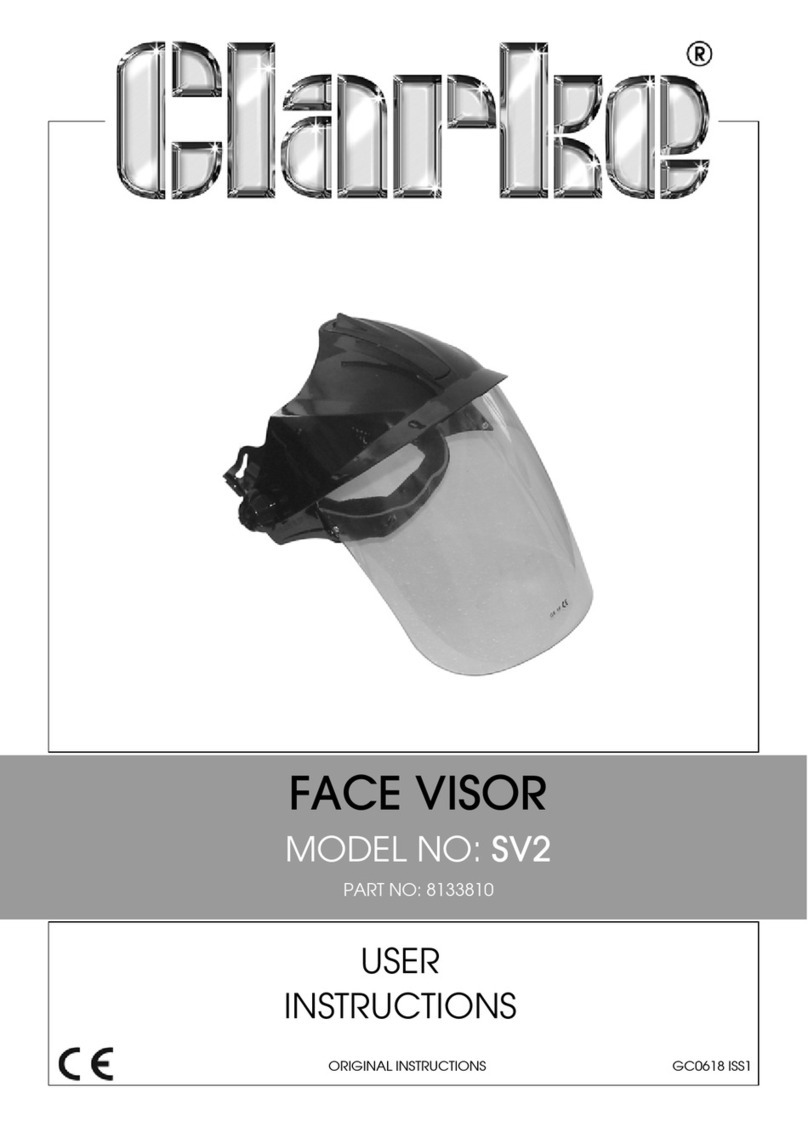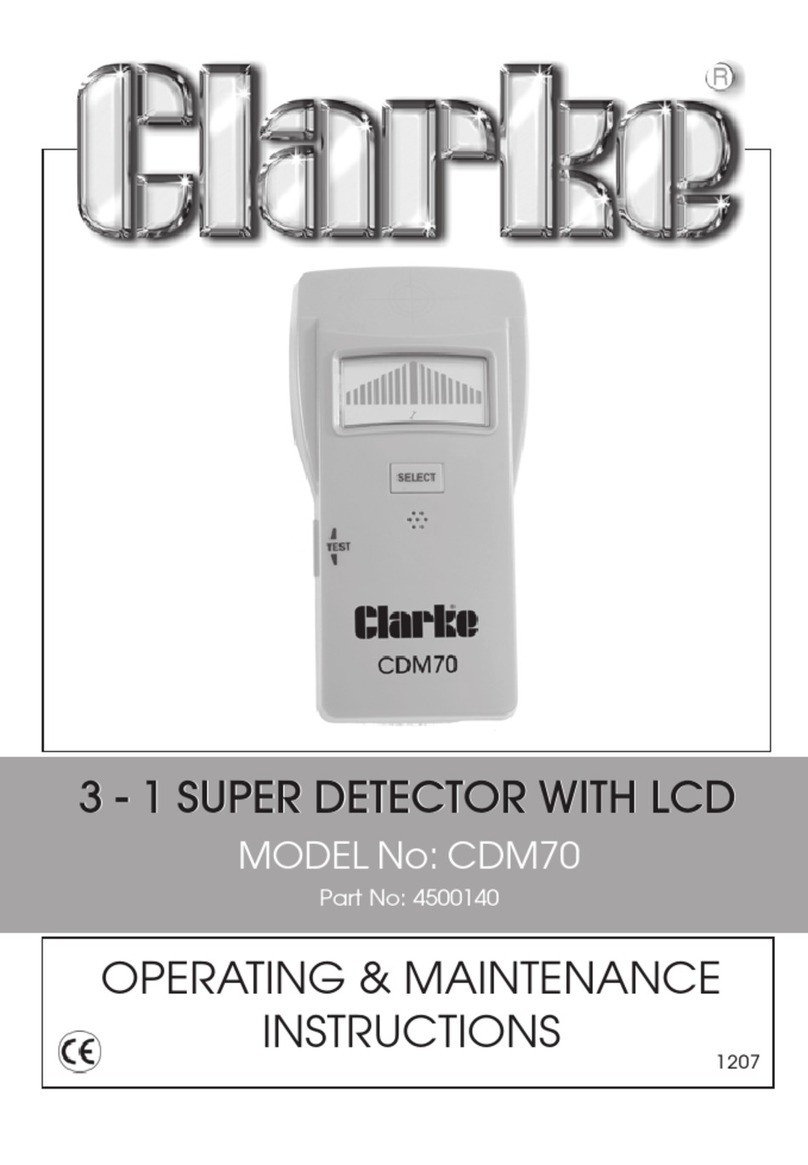6
METAL DETECTION
1. Set the selector switch to the METAL position.
Calibration
2. Hold the unit in the air away from any metal objects,
3. Press and hold the TEST button.
• The unit will beep twice when calibration is complete.
Do not release the TEST button.
Using
4. Keep holding the TEST button and place the unit on the
wall, slowly move the unit sideways across the wall.
• As you approach a metal object, the signal lights will
light up sequentiallly, the buzzer will sound when you
reach the edge of the metal object, when this happens
mark the point by placing a pencil mark in the grove on
top of the unit.
5. Carry on moving the unit in the same direction until all
of the signal LEDS go out and then reverse direction.
• Once again, mark the point at which the top LED lights
up and the buzzer sounds by placing a pencil mark in
the grove on top of the unit.
• The centre of the metal object is located mid way
between the two pencil marks.





























